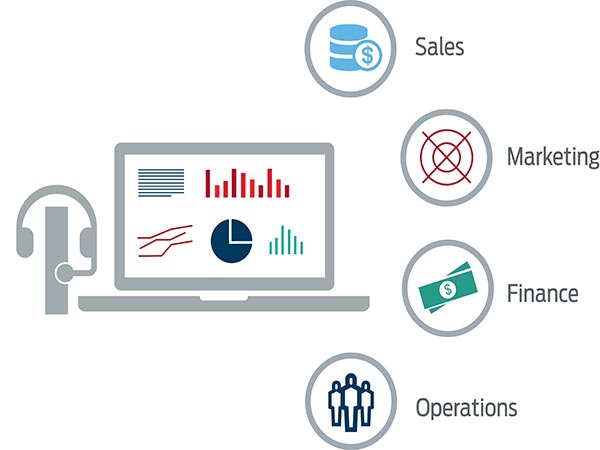Getting to Why: How Radial Used Analytics to Remove “Powerless” Phrases from its CX
Getting to Why: How Radial Used Analytics to Remove “Powerless” Phrases from its CX

With workforce optimization (WFO), figuring out why something happens is just as important as figuring out what happened. In fact, sometimes the “why” is even more revealing than the “what.”
That’s what Radial (a bpost group company) discovered when it ran into a problem with its customer experience: they knew agents were using what they termed “powerless-to-help” language—verbiage that indicated they could not or would not help the customer—but they couldn’t identify the exact words and phrases. Worse yet, they didn’t know why agents were using them in the first place.
It’s a classic example of cause and effect, and a very common problem for many contact centers. That’s because contact center technology solutions typically report only the outcomes of a customer experience. They stop short of pinpointing the causes.
But aren’t the causes what you, as contact center leaders, really need to understand? After all, you can’t permanently fix a problem—the effect—until you resolve whatever’s causing it.
That’s exactly what Radial leaders had to do. They knew—in addition to determining the precise powerless-to-help words and phrases heard by customers—they had to figure out why agents used them. Then they had to fix the problem, fast.
And they did just that using Calabrio Analytics. What’s more, the improvements they made were dramatic and significant:
- Increased net first contact resolution by three percent
- Increased net rep knowledge by 2.48 percent
- Increased net customer satisfaction (CSAT) by 2.17 percent
- Improved net rep demeanor by .56 percent
This powerful story is why we named Radial the grand prize winner in Calabrio’s inaugural Analytics Awards competition held in late 2019. And it’s a great use case for our Sentiment Analysis product, which we launched in 2018.
Calabrio Sentiment Analysis: More Accurate, with a Lower TCO
To understand how customers truly feel about their brand and their products, companies can’t just analyze and listen to what customers say—they also need to understand what customers mean.
Net-net: organizations need to detect a customer’s true sentiment even when the customer doesn’t necessarily say it.
That’s what Calabrio Sentiment Analysis does. It converts entire audio recordings into searchable text, then uses speech and text analysis to score data based upon its sentiment.
Once contact center leaders truly understand the meaning behind the words their customers use, they have the critical Voice-of-the-Customer (VoC) insights they need to:
- Identify issues and customer pain points before they negatively impact the business
- Enhance the customer experience
- Increase employee engagement
- Improve agent performance
- Eliminate technology or process bottlenecks
- Improve operational efficiency
- See trends as they emerge
- Deliver a consistent customer experience at every touch point, including social media
Now, we’re not the only WFO vendor that can analyze the sentiment of contact center interactions. But Calabrio does deliver two key benefits that really set us apart from other offerings:
- Accuracy powered by a modern, artificial intelligence (AI)-based development approach.
The unique, machine learning (ML)-powered speech-to-text engine in Calabrio Sentiment Analysis delivers one of the highest transcription accuracy rates in the industry. It then creates mathematical approximations of agent and customer behavior based upon call recordings, quality management scores, customer survey scores, net promoter scores, VoC data, text analysis findings and speech analysis findings, which leaders use to predict and manage the outcomes that most affect their contact centers. - A lower total cost of ownership (TCO).
Only Calabrio can give organizations the fastest processing rates, highest scalability and lowest TCO in the industry because only Calabrio leverages GPU-accelerated hardware. With it, Calabrio Sentiment Analysis delivers processing speeds 150 times faster than traditional CPUs.
That’s why Calabrio Sentiment Analysis customers can more confidently use their findings to:
- Better target brand promoters versus brand detractors via customized marketing
- Improve products by detecting sentiment by product line
- Improve other initiatives by detecting sentiment by agent, by marketing campaign, by channel (email sentiment, phone call sentiment, day of week sentiment), etc.
- Drive agent awareness of customer satisfaction
- Identify agent coaching opportunities and agent training opportunities
This last bullet is what was most important to Radial’s contact center leaders for their project. So they used Sentiment Analysis to understand exactly how the “powerless-to-help” language their agents used influenced the outcomes of their customer interactions. Then they identified the characteristics of agents less likely or more likely to advocate for customers, and built a robust, multi-faceted training program to teach agents how to be better customer advocates. And it worked!
According to Radial Customer Experience Manager Nicole Price, “By helping agents shift the language they use, away from what they can’t do and instead focus in a positive way on what they can do, we’ve armed Radial contact center agents to tap clever, new skills that significantly improve our customer experience every day. We’ve neutralized a significant financial threat while making both customers and agents much happier.”
That’s a winning use of Calabrio Analytics if ever I saw one. Congratulations, Radial!
Find out how Radial taught its agents to be better customer advocates—read the “3 Award-Winning Workforce Optimization (WFO) Analytics Success Stories ” Ebook.









